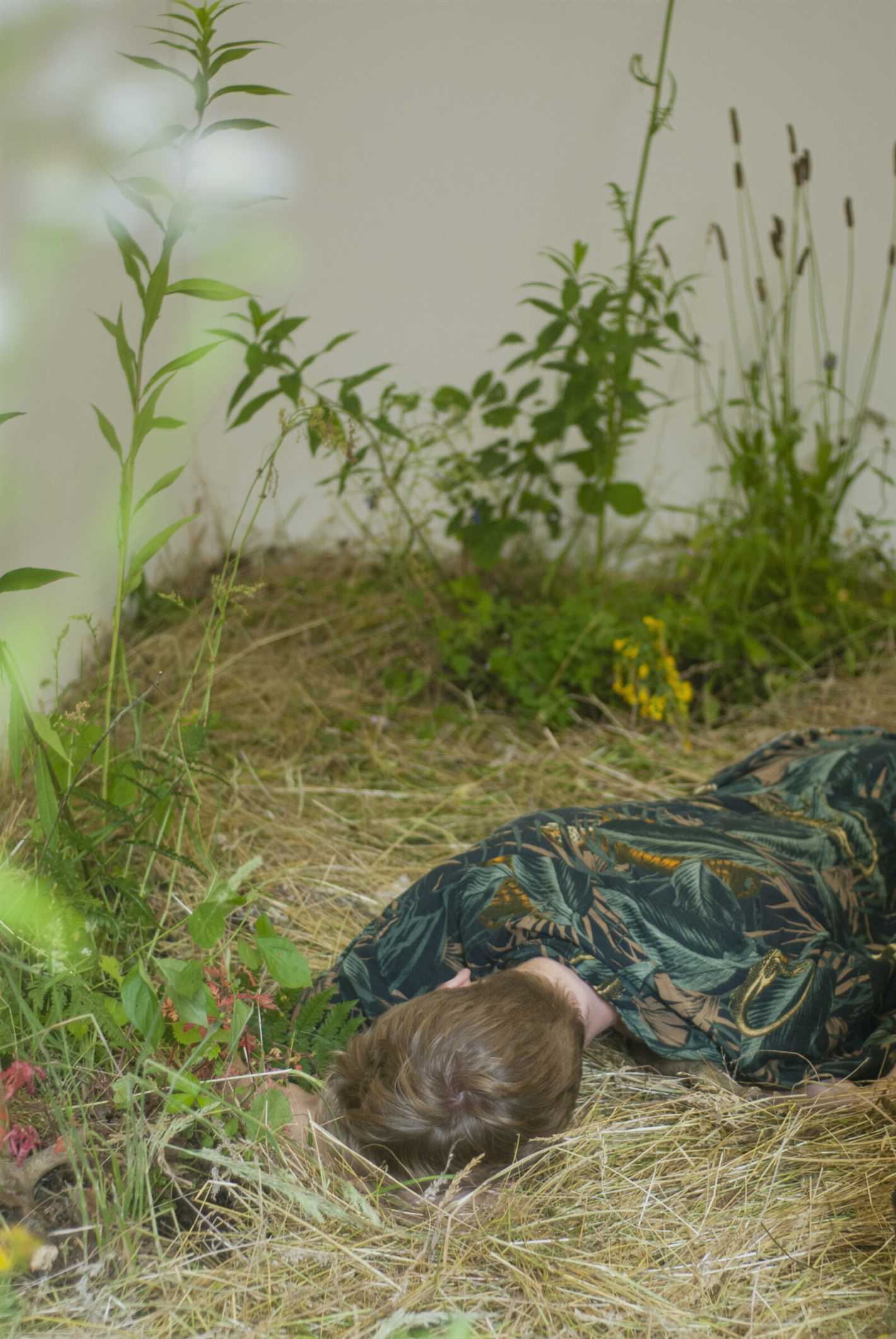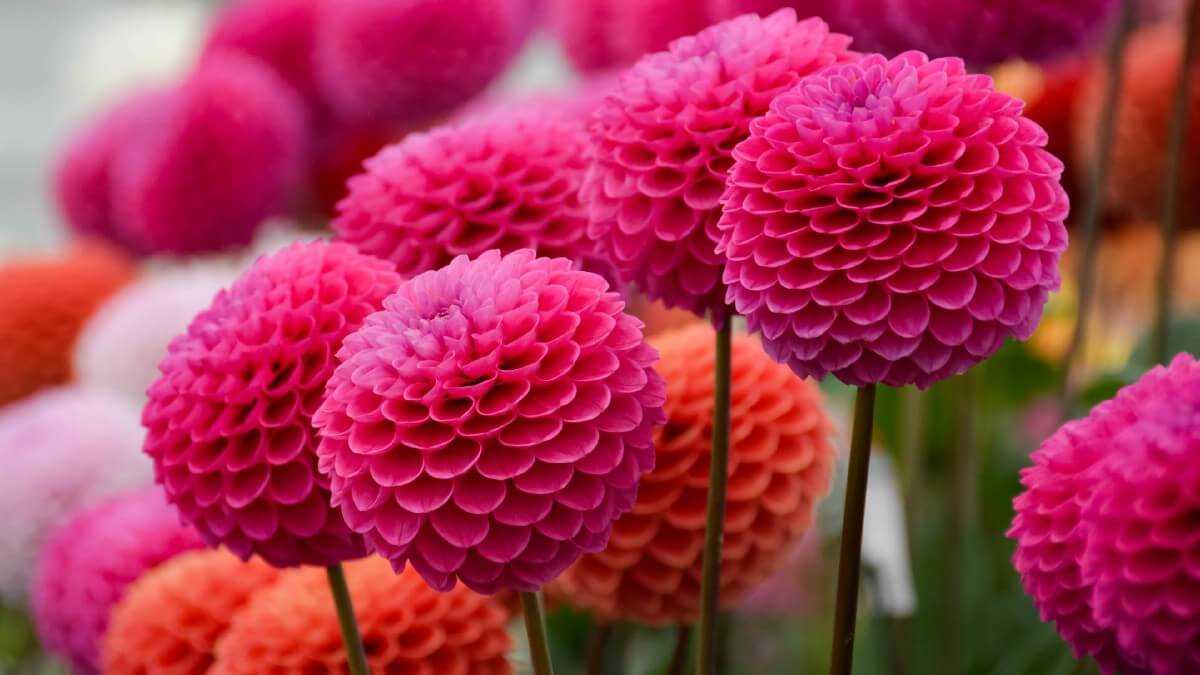- The Benefits of Growing Sleep-Grass in Our Climate
- Optimal Conditions for Sleep-Grass Growth
- 1. Sunlight
- 2. Watering
- 3. Soil Quality
- 4. Fertilization
- 5. Weed Control
- 6. Maintenance
- Choosing the Right Sleep-Grass Varieties
- 1. Climate Compatibility
- 2. Soil Type
- 3. Sunlight Requirements
- 4. Growth Habits
- 5. Maintenance Needs
- Preparing the Soil for Sleep-Grass Planting
- 1. Test the Soil
- 2. Amend the Soil
- 3. Remove Weeds and Rocks
- 4. Loosen the Soil
- 5. Level the Soil
- 6. Water the Soil
- Essential Tools for Sleep-Grass Care
- 1. Pruning Shears
- 2. Watering Can or Hose
- 3. Fertilizer
- 4. Hand Trowel
- 5. Mulch
- 6. Gardening Gloves
- 7. Shovel or Spade
- 8. Gardening Rake
- Watering and Fertilizing Sleep-Grass
- Watering:
- Fertilizing:
- Common Pests and Diseases of Sleep-Grass
- Pests
- Diseases
- Harvesting and Storing Sleep-Grass
- 1. Timing
- 2. Tools
- 3. Cutting Technique
- 4. Storing Fresh Sleep-Grass
- 5. Drying Sleep-Grass
- 6. Freezing Sleep-Grass
- Ways to Use Sleep-Grass in Everyday Life
- 1. Sleep Aid
- 2. Aromatherapy
- 3. Herbal Bath
- 4. Room Freshener
- 5. Stress Relief
- 6. Culinary Uses
- Questions and Answers:
- What is sleep-grass?
- Can sleep-grass be grown in our climate?
- How do I grow sleep-grass?
- What are the benefits of growing sleep-grass?
- Can sleep-grass be used as a natural remedy for sleep disorders?
- Are there any precautions or side effects associated with sleep-grass?
- Videos: Fall Out Boy – Sugar, We’re Goin Down (Official Music Video)
Have you ever wished for a lush green lawn that requires minimal maintenance? Look no further than sleep-grass! Sleep-grass is a hardy, low-maintenance grass variety that thrives in our climate. Whether you’re a seasoned gardener or a beginner, sleep-grass is the perfect choice for a hassle-free lawn.
What makes sleep-grass so unique is its ability to thrive in various climate conditions. Whether you live in a hot and dry desert climate or a cold and snowy region, sleep-grass can adapt and grow without much effort on your part. It’s also highly resistant to diseases and pests, making it an ideal choice for those who want a beautiful lawn without the constant worry of maintenance.
Not only is sleep-grass low-maintenance, but it also requires minimal water. In our climate where water conservation is essential, sleep-grass is a sustainable choice for your lawn. It has deep roots that help it survive drought conditions and maintain its lush green appearance even with minimal watering.
So, if you’re tired of spending hours on lawn maintenance or simply want a beautiful and sustainable lawn, consider growing sleep-grass in our climate. With its adaptability, resistance to pests and diseases, and minimal water requirements, sleep-grass is the perfect choice for a stress-free and lush green lawn.
The Benefits of Growing Sleep-Grass in Our Climate
Sleep-grass is a unique plant that offers a range of benefits when grown in our climate. Here are some of the reasons why you should consider growing sleep-grass:
- Improved Sleep Quality: Sleep-grass has natural sedative properties that can help promote a good night’s sleep. The scent of sleep-grass can induce a sense of calmness and relaxation, making it easier to fall asleep and stay asleep throughout the night.
- A Natural Stress Reliever: In our fast-paced world, stress is a common problem. Sleep-grass can help alleviate stress and anxiety by creating a soothing and peaceful environment. The gentle fragrance of sleep-grass can create a calming effect, helping to reduce tension and promote mental well-being.
- Aesthetically Pleasing: Sleep-grass is a beautiful plant that can enhance the visual appeal of any garden. With its lush green foliage and delicate flowers, sleep-grass adds a touch of elegance to any landscape. Whether used as ground cover or as a border plant, sleep-grass is sure to enhance the overall aesthetics of your garden.
- Low Maintenance: Sleep-grass is a hardy plant that requires minimal care. It is drought-tolerant and can thrive in a variety of soil conditions, making it a perfect choice for our climate. Once established, sleep-grass does not require frequent watering or fertilization, saving you time and effort in maintenance.
- Environmental Benefits: Sleep-grass plays a crucial role in environmental conservation. Its extensive root system helps to prevent soil erosion and improve soil quality. Sleep-grass also acts as a natural filter, purifying the air by absorbing pollutants and releasing oxygen. By growing sleep-grass, you are contributing to a healthier and cleaner environment.
- Cost-Effective: Growing sleep-grass is cost-effective as it requires minimal inputs. Once you have established a sleep-grass bed, it can spread and multiply on its own, eliminating the need for buying new plants. Additionally, the low maintenance requirements translate to savings on water bills and fertilizers.
In conclusion, growing sleep-grass in our climate is beneficial for both your well-being and the environment. With its sleep-enhancing properties, aesthetic appeal, low maintenance needs, and environmental benefits, sleep-grass is a wise choice for any garden. Start growing sleep-grass today and experience the many advantages it offers.
Optimal Conditions for Sleep-Grass Growth

Sleep-grass is a unique plant that requires specific environmental conditions to thrive. By providing these optimal conditions, you can ensure healthy growth and a lush, green sleep-grass lawn. Here are the key factors to consider:
1. Sunlight
Sleep-grass requires at least 6-8 hours of direct sunlight per day to photosynthesize effectively. This plant thrives when placed in a location that receives ample sunlight and has limited shade. Ensure that your sleep-grass lawn is not obstructed by buildings, trees, or other structures that may block sunlight.
2. Watering
Proper watering is essential for sleep-grass growth. It is recommended to water your sleep-grass lawn deeply but infrequently. Watering deeply encourages the roots to grow deeper into the soil, resulting in a stronger and more drought-resistant lawn. Avoid frequent shallow watering, as it can lead to shallow root development and a weak lawn.
It is also crucial to monitor the moisture level of your sleep-grass lawn regularly. Overwatering can cause waterlogged soil, leading to root rot and other issues. On the other hand, underwatering can lead to dry, yellowing grass. Adjust your watering schedule based on the specific needs of your sleep-grass and the climate you live in.
3. Soil Quality
Sleep-grass prefers well-draining soil with a slightly acidic to neutral pH level. Conduct a soil test to determine the pH level of your soil and make amendments if necessary. Adding organic matter, such as compost, can improve the soil’s structure and nutrient content.
4. Fertilization
Regular fertilization is crucial for sleep-grass to receive the necessary nutrients for optimal growth. Use a slow-release or organic fertilizer specially formulated for sleep-grass to ensure steady nutrient availability throughout the growing season. Follow the manufacturer’s instructions on the fertilizer package for the correct application rate and frequency.
5. Weed Control
Preventing the growth of weeds is essential for maintaining a healthy sleep-grass lawn. Regularly inspect your lawn for any weed growth and promptly remove them to prevent competition for resources. Consider using a pre-emergent herbicide to prevent weed seeds from germinating.
6. Maintenance
Proper care and maintenance play a vital role in the health and appearance of your sleep-grass lawn. Regularly mow your lawn to the recommended height to prevent the grass from becoming too long or too short. Avoid cutting more than one-third of the grass blade height at a time to avoid stress on the plants.
In conclusion, providing the optimal conditions for sleep-grass growth, such as sunlight, proper watering, well-draining soil, regular fertilization, weed control, and maintenance, will help you establish a beautiful and thriving sleep-grass lawn in our climate.
Choosing the Right Sleep-Grass Varieties

When it comes to choosing the right sleep-grass varieties for your garden, there are a few factors that you should consider. Here are some important things to keep in mind:
1. Climate Compatibility
One of the first things to consider is the climate in your area. Different sleep-grass varieties have different climate requirements, so it’s important to choose a variety that is compatible with your local climate. Some varieties thrive in cool climates, while others prefer warmer temperatures.
2. Soil Type
The type of soil in your garden can also affect the growth and health of sleep-grass. Some varieties prefer well-drained soils, while others can tolerate heavier soils. It’s important to choose a variety that is suited to the soil type in your garden to ensure the best results.
3. Sunlight Requirements
Another important factor to consider is the sunlight requirements of the sleep-grass variety. Some varieties need full sunlight to thrive, while others can tolerate partial shade. Make sure to choose a variety that matches the amount of sunlight available in your garden.
4. Growth Habits
Sleep-grass varieties also differ in their growth habits. Some varieties spread quickly and can be used as ground cover, while others grow in clumps. Consider how you want your garden to look and choose a variety that fits your desired aesthetic.
5. Maintenance Needs
Lastly, consider the maintenance needs of different sleep-grass varieties. Some varieties require regular mowing and fertilizing, while others are low-maintenance. Consider the amount of time and effort you are willing to invest in maintaining your sleep-grass and choose a variety accordingly.
By considering these factors, you can choose the right sleep-grass varieties that will thrive in your garden and provide you with a beautiful and relaxing outdoor space.
Preparing the Soil for Sleep-Grass Planting

Before planting sleep-grass in your garden, it’s essential to prepare the soil properly. The quality of the soil will directly affect the growth and health of your sleep-grass, so taking the time to prepare it will ensure a successful planting.
1. Test the Soil
The first step in soil preparation is to test it for pH levels and nutrient content. You can purchase a soil testing kit from a gardening store or send a soil sample to a professional lab for analysis. Knowing the pH levels and nutrient deficiencies in your soil will help you make necessary amendments.
2. Amend the Soil
Based on the results of your soil test, you may need to amend the soil to create ideal conditions for sleep-grass. Common amendments include adding organic matter, such as compost or well-rotted manure, to improve soil structure and fertility.
Additionally, you may need to adjust the pH of the soil. Sleep-grass prefers slightly acidic soil with a pH range of 5.5 to 6.5. If your soil is too acidic, you can add lime to raise the pH level. On the other hand, if the soil is too alkaline, you can add sulfur or peat moss to lower the pH.
3. Remove Weeds and Rocks
Prior to planting sleep-grass, it’s crucial to remove any weeds, rocks, or debris from the soil. Weeds can compete with sleep-grass for nutrients and sunlight, hindering its growth. Rocks and debris can create obstacles for the roots, preventing proper establishment.
Clear the area where you plan to plant sleep-grass, ensuring it’s weed-free and free of any obstructions.
4. Loosen the Soil
Sleep-grass roots need loose soil to penetrate easily and establish a strong foundation. Use a garden fork or a rototiller to loosen the top layer of soil. This will break up compacted soil and improve drainage.
5. Level the Soil
After loosening the soil, use a garden rake to level the surface. This will provide an even base for the sleep-grass and aid in proper water distribution. Ensure there are no low-lying areas where water can pool, as excessive moisture can lead to fungal diseases.
6. Water the Soil
Before planting sleep-grass, thoroughly water the soil. This will ensure that the soil is uniformly moist, providing ideal conditions for root growth. Avoid overwatering, as excessive moisture can lead to root rot.
By following these steps and preparing the soil properly, you’ll create an optimal environment for sleep-grass growth, leading to a lush and beautiful garden. Remember to maintain proper care and regular watering once the sleep-grass is planted to ensure its long-term success.
Essential Tools for Sleep-Grass Care
Growing and maintaining sleep-grass plants can be a wonderful and fulfilling experience. However, it’s important to have the right tools to ensure that your sleep-grass thrives in our climate. Here are some essential tools you will need for sleep-grass care:
1. Pruning Shears
Pruning shears are a must-have tool for maintaining the health and shape of your sleep-grass. Use them to trim any overgrown or dead leaves, flowers, or stems. Regular pruning will promote new growth and maintain the appearance of your sleep-grass plants.
2. Watering Can or Hose
Proper watering is essential for sleep-grass care. Depending on the needs of your sleep-grass, you may choose to use a watering can or a hose with an adjustable nozzle. Ensure that the water reaches the roots without causing excessive wetness, as overwatering can lead to root rot.
3. Fertilizer
Using a high-quality fertilizer specifically formulated for sleep-grass will help to promote healthy growth and vibrant color. Follow the instructions on the fertilizer packaging for the correct dosage and frequency of application. Be careful not to overfertilize, as this can cause leaf burn.
4. Hand Trowel
A hand trowel is a versatile tool that will come in handy for various tasks in sleep-grass care, such as planting new sleep-grass, transplanting, and loosening soil around the roots. Look for a sturdy hand trowel with a comfortable grip for ease of use.
5. Mulch
Applying a layer of mulch around your sleep-grass plants will help to retain moisture, regulate soil temperature, and prevent weed growth. Choose a mulch that is suitable for your climate and spread it evenly around the plants, avoiding direct contact with the stems.
6. Gardening Gloves

Protect your hands from dirt, thorns, and other potential hazards by using gardening gloves when working with your sleep-grass. Look for gloves that are durable and breathable to ensure comfort during longer gardening sessions.
7. Shovel or Spade
A shovel or spade will be useful for tasks like digging holes for planting sleep-grass or removing unwanted plants from your sleep-grass bed. Choose a tool with a sturdy handle and a sharp, durable blade for efficient use.
8. Gardening Rake
A gardening rake is great for leveling soil, removing debris, and breaking up clumps. Use a rake with flexible tines to avoid damaging the sleep-grass roots or disturbing the top layer of soil.
With these essential tools for sleep-grass care, you’ll be well-equipped to ensure the health and beauty of your sleep-grass plants. Remember to wear appropriate protective gear and follow proper care guidelines for optimal results.
Watering and Fertilizing Sleep-Grass
Sleep-grass is a hardy plant that requires minimal watering. However, proper watering and fertilizing techniques can help ensure its growth and health. Here are some tips to help you water and fertilize your sleep-grass effectively:
Watering:
- Consistent watering: Sleep-grass requires regular watering to establish a healthy root system. Water the plants deeply, allowing the water to penetrate the soil.
- Watering frequency: Water your sleep-grass every 3-4 days during the growing season. Be mindful of the weather conditions, as hotter and drier climates may require more frequent watering.
- Avoid overwatering: Overwatering can lead to root rot and other diseases. Ensure that the soil is slightly moist, but not waterlogged, between watering sessions.
- Water in the morning: It is best to water sleep-grass in the morning to allow the leaves to dry before nighttime. This helps prevent fungal diseases.
Fertilizing:
- Slow-release fertilizer: Use a slow-release fertilizer specifically formulated for sleep-grass. This type of fertilizer provides a steady supply of nutrients over an extended period.
- Timing: Apply fertilizer to sleep-grass during the growing season, typically in early spring. Avoid fertilizing during dormancy periods.
- Follow instructions: Read and follow the instructions on the fertilizer packaging for the appropriate application rates. Over-fertilizing can harm the plants.
- Avoid excess nitrogen: Excessive nitrogen can promote excessive foliage growth at the expense of root development. Use a balanced fertilizer to maintain the overall health of sleep-grass.
Remember to observe your sleep-grass regularly and adjust the watering and fertilizing practices as needed. With proper care, your sleep-grass will thrive in our climate!
Common Pests and Diseases of Sleep-Grass
While sleep-grass is a resilient plant that can withstand various growing conditions, it is not entirely immune to pests and diseases. Here are some of the most common issues you may encounter when growing sleep-grass:
Pests
- Aphids: These small insects feed on the sap of sleep-grass plants, causing stunted growth and yellowing leaves. Regularly inspect your plants for aphids and use insecticidal soaps or neem oil to control infestations.
- Slugs and Snails: These slimy creatures can leave behind holes and chewed leaves on sleep-grass. Set up barriers such as copper tape or use organic slug pellets to protect your plants.
- Whiteflies: These tiny insects can be found on the undersides of sleep-grass leaves, causing yellowing and wilting. Introduce natural predators like ladybugs or use sticky traps to control whitefly populations.
- Cutworms: Cutworms are caterpillars that feed on sleep-grass stems, often cutting them at the base. Apply insecticides or use physical barriers like collars to prevent cutworm damage.
Diseases
- Fungal Leaf Spot: This disease appears as brown or black spots on the leaves of sleep-grass. It can spread quickly in wet and humid conditions. Remove infected foliage and apply a fungicide to prevent further spread.
- Powdery Mildew: Powdery mildew manifests as a white powdery coating on the leaves of sleep-grass. Improve air circulation, remove affected leaves, and apply a fungicide to control its spread.
- Root Rot: Excessive waterlogging can lead to root rot in sleep-grass. To prevent this disease, ensure proper drainage by using well-draining soil and avoid overwatering.
- Yellow Stripe Rust: Yellow stripe rust presents as yellow-orange stripes on the leaves of sleep-grass. Remove infected foliage and apply a fungicide to prevent the disease from spreading.
Regular monitoring of your sleep-grass plants and prompt action can help prevent the spread of pests and diseases. It is also important to maintain proper plant care practices, such as providing adequate sunlight, water, and nutrition, to keep your sleep-grass healthy and resilient.
Harvesting and Storing Sleep-Grass
Harvesting and storing sleep-grass can be done in a few simple steps, ensuring that you have a fresh supply of this delightful plant year-round. The following guidelines will help you make the most of your sleep-grass harvest:
1. Timing
The best time to harvest sleep-grass is in the early morning, just after the dew has dried but before the sun becomes too hot. This ensures that the plant retains its maximum moisture and flavor.
2. Tools
All you need for harvesting sleep-grass is a sharp pair of garden scissors or shears. Make sure to clean and sanitize your tools before use to prevent any potential contamination.
3. Cutting Technique
When harvesting sleep-grass, it’s important to cut the grass at its base, near the soil level. This promotes re-growth and helps maintain the health of the plant. Make clean cuts to avoid damaging the remaining sleep-grass.
4. Storing Fresh Sleep-Grass
Once harvested, place the sleep-grass in a clean and dry container. It’s best to use a paper bag or a breathable container to allow air circulation. Keep the sleep-grass in a cool, dark place, such as a refrigerator, and use it within 2-3 days for optimal freshness and flavor.
5. Drying Sleep-Grass
If you wish to store sleep-grass for a longer period, drying is the preferred method. Simply hang the sleep-grass upside down in a dry area with good air circulation. Once fully dried, trim off any excess stems and store the sleep-grass in an airtight container in a cool, dark place.
6. Freezing Sleep-Grass

If you have a surplus of sleep-grass and want to preserve its flavor and nutrients, freezing is a great option. Clean and dry the sleep-grass, then pack it tightly into freezer bags or containers. Label and date them before placing in the freezer for long-term storage.
| Method | Advantages | Disadvantages |
|---|---|---|
| Storing Fresh | Retains maximum freshness and flavor | Short shelf life |
| Drying | Allows for long-term storage | Loss of some flavor and nutrients |
| Freezing | Preserves flavor and nutrients | Slight change in texture after thawing |
By following these guidelines, you can ensure that your sleep-grass harvest will provide you with a year-round supply of this wonderful plant. Enjoy the benefits of sleep-grass in your cooking, teas, and relaxation rituals!
Ways to Use Sleep-Grass in Everyday Life
Sleep-grass, also known as dream-weed, is a versatile plant that can be used in various ways in everyday life. Whether you want to improve your sleep quality or simply add a touch of relaxation to your day, sleep-grass has got you covered.
1. Sleep Aid
One of the most popular uses of sleep-grass is as a natural sleep aid. The plant contains compounds that have a calming effect on the nervous system, making it easier to fall asleep and improving the overall quality of sleep. You can brew sleep-grass leaves into a tea and drink it before bedtime to promote a restful night’s sleep.
2. Aromatherapy
The soothing scent of sleep-grass can be used in aromatherapy to promote relaxation and reduce anxiety. You can use sleep-grass essential oil in a diffuser or add a few drops to your bathwater to create a calming atmosphere. Inhaling the aroma of sleep-grass can help to relieve stress and promote a sense of well-being.
3. Herbal Bath

Adding sleep-grass leaves or essential oil to your bath can turn it into a relaxing and rejuvenating experience. The warm water combined with the soothing properties of sleep-grass can help to relieve muscle tension, promote relaxation, and improve overall well-being. Simply add sleep-grass leaves or a few drops of sleep-grass essential oil to your bathwater and soak for 20-30 minutes.
4. Room Freshener
The calming scent of sleep-grass can also be used to freshen up your living space. You can make a natural room freshener by combining sleep-grass essential oil with water in a spray bottle. Mist the air in any room to create a calming atmosphere and eliminate unpleasant odors.
5. Stress Relief
If you’re feeling stressed or anxious, sleep-grass can help to calm your nerves and promote relaxation. You can simply inhale the scent of sleep-grass essential oil directly from the bottle or apply a few drops to a tissue or handkerchief and carry it with you. Whenever you feel overwhelmed, take a moment to inhale the scent and allow the soothing properties of sleep-grass to take effect.
6. Culinary Uses
Sleep-grass can also be used in culinary creations to add a subtle relaxation-inducing flavor. The leaves of sleep-grass can be dried and ground into a powder, which can then be added to various recipes, such as teas, desserts, and even savory dishes. Just remember to use sleep-grass sparingly, as its flavor can be quite potent.
| Benefit | Description |
|---|---|
| Improved sleep quality | Sleep-grass can help to promote a restful night’s sleep. |
| Relaxation | The soothing properties of sleep-grass can help to reduce anxiety and promote a sense of well-being. |
| Stress relief | Sleep-grass can calm your nerves and help to relieve stress. |
| Muscle tension relief | The warm water combined with sleep-grass in a bath can help to relax your muscles and release tension. |
Overall, sleep-grass is a versatile plant that can be used in a variety of ways in everyday life. Whether you want to improve your sleep, reduce stress, or simply enjoy the calming effects, sleep-grass has something to offer.
Questions and Answers:
What is sleep-grass?
Sleep-grass is a type of plant that is known for its soothing and calming properties. It is often used to promote relaxation and improve sleep quality.
Can sleep-grass be grown in our climate?
Yes, sleep-grass can be grown in our climate. It is a hardy plant that can tolerate a wide range of temperatures and soil conditions.
How do I grow sleep-grass?
Growing sleep-grass is relatively easy. It can be grown from seeds or purchased as a young plant. It requires well-draining soil and should be watered regularly. It can be grown both indoors and outdoors, as long as it receives enough sunlight.
What are the benefits of growing sleep-grass?
Growing sleep-grass can have several benefits. It can help to create a calming and relaxing environment, improve air quality, and promote better sleep. It is also a low-maintenance plant that requires minimal care.
Can sleep-grass be used as a natural remedy for sleep disorders?
Sleep-grass is often used as a natural remedy for sleep disorders. Its calming properties can help to reduce anxiety and promote restful sleep. However, it is important to consult with a healthcare professional before using sleep-grass or any other natural remedy for sleep disorders.
Are there any precautions or side effects associated with sleep-grass?
While sleep-grass is generally considered safe, it may cause allergic reactions in some individuals. It is also important to use caution when using sleep-grass alongside other medications or supplements, as it may interact with them. It is always best to consult with a healthcare professional before using sleep-grass or any other natural remedy.







